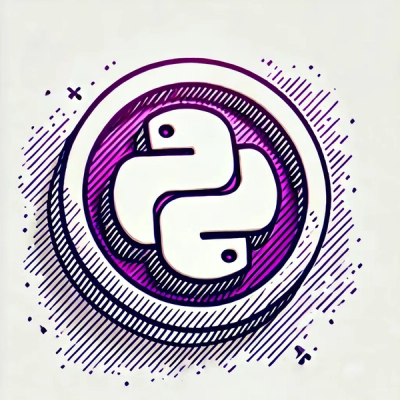
Product
Socket Now Supports pylock.toml Files
Socket now supports pylock.toml, enabling secure, reproducible Python builds with advanced scanning and full alignment with PEP 751's new standard.
@codastic/react-positioning-portal
Advanced tools
The positioning portal is a low level React component to build all kinds of absolutely positioned flyouts which are anchored to another element in the viewport. This can be used to create dropdowns, tooltips, context menus, etc.
The positioning portal is a low level React component to build all kinds of absolutely positioned flyouts which are anchored to another element in the viewport. This can be used to create dropdowns, tooltips, context menus, etc.
The positioning portal is build as unopinionated as possible which means, it creates only mininmal DOM and does not have any dependencies to specific styling libraries. It only uses some inline styles on the portal for positioning.
How the portal is positioned in relation to its anchor in the DOM is defined by a positioning strategy. The default positioning strategy should be enough for a lot of use cases. It either positions the portal above (left or right aligned) to the anchor or below depending on the available space in the current viewport. This default strategy is perfectly suited to build e.g. custom dropdowns.
It is also possible to overwrite the positioning strategy. An example for a tooltip is shown in storybook.
See storybook for more examples.
$ npm install @codastic/react-positioning-portal react react-dom --save
Basic usage of <PositioningPortal /> where state is handled outside.
import { useState } from 'react';
import { PositioningPortal } from '@codastic/react-positioning-portal';
// ...
const [isPortalOpen, setIsPortalOpen] = useState(false);
<PositioningPortal
isOpen={isPortalOpen}
onOpen={() => setIsPortalOpen(true)}
onShouldClose={() => setIsPortalOpen(false)}
portalContent={
<div>
Portal content goes here.
<button type="button" onClick={() => setIsPortalOpen(false)}>
Close
</button>
</div>
}
>
<button type="button" onClick={() => setIsPortalOpen(true)}>
Open portal
</button>
</PositioningPortal>
Basic usage of <PositioningPortalWithState /> which handles state inside.
import { PositioningPortalWithState } from '@codastic/react-positioning-portal';
// ...
<PositioningPortalWithState
portalContent={
<div>
Portal content goes here.
</div>
}
>
{({ open}) => (
<button type="button" onClick={open}>
Open portal
</button>
)}
</PositioningPortalWithState>
<PositioningPortal /><PositioningPortalWithState />This component is almost feature equivalent to <PositioningPortal /> with the exception that
the isOpen state is already handled by the component itself. So if you don't have to control this state outside
it can be easier to use <PositioningPortalWithState /> and let it handle the state itself.
<PositioningPortal />children: React.ReactNode:
The PositioningPortal component takes the portal's anchor element as children. Its width is passed to the portalContent render prop argument relatedWidth.
portalElement?: React.ReactElement: (default: <div />)
The portalElement wraps the portalContent. When rendering the portalContent the PositioningPortal appends
the styles position, width, left, top and visibility to the portalElement. By defining your own styles on the portalElement you can overwrite those styles. E.g. if you prefer a fixed position for the portal you can
do the following:
<PositioningPortal
portalElement={<div style={{ position: 'fixed' }} />}
>
// ...
portalContent: React.ReactNode | ((params: PortalContentRenderProps<Strategy>) => React.ReactNode);:
Actual content rendered when the portal is open. portalContent can be any react node or a function
returning a react node. The function receives the following props:
interface PortalContentRenderProps<Strategy> {
close: () => void; // Basically calls the handler passed to onShouldClose
isOpen: boolean;
isPositioned: boolean; // Becomes true after the portalContent is positioned and visible
strategy: Strategy; // Whatever the positionStrategy returns
relatedWidth: number; // The width of the PositioningPortal children
transitionStarted: () => void; // Signals that there is a transition
transitionEnded: () => void; // Should be called when the portal can safely be removed from the DOM
}
onOpen: () => void:
Will be called after the portal content is positioned and visible.
onClose?: () => void
Callback when portal closes.
onShouldClose?: () => void:
This gets called if PortalContentRenderProps.close gets called, by clicking outside the portal content (in case closeOnOutsideClick is true) or if closeOnKeyDown returns true.
closeOnOutsideClick?: boolean: (default: true)
If set to true, onShouldClose gets called by clicking outside the portal content.
closeOnKeyDown?: (event: KeyboardEvent) => boolean: (default: event => event.keyCode === 27, close on ESC)
A function, which will be called on keydown. If it returns true, the handler passed to onShouldClose will be called.
isOpen?: boolean:
Sets the PositioningPortal to be open or closed.
positionStrategy?: PositioningStrategy<Strategy>:
Sets a custom PositioningStrategy. For details see the PositioningStrategy section.
rootNode?: HTMLElement:
Pass a custom root node for the portal to be added to.
<PositioningPortalWithState />Extends properties of <PositioningPortal /> and adds/changes the folling properties:
children: React.ReactNode | ((params: RenderProps) => React.ReactNode):
Since state is handled inside of the component, it is possible to render the children via a render function and to receive the following render props:
interface RenderProps {
close: () => void;
open: () => void;
isOpen: boolean;
}
The positioning strategy is a function which receives the rectangle of the parent anchor element parentRect relative to the viewport (measured with getBoundingClientRect())
and the rectangle for the portal. During the first render phase the portal is rendered invisible until the positioning strategy has been called.
The strategy function should return the position for the portal (top and left). I can optionally return other arbitrary data (strategy) which can be used to customize the rendering of the portal.
E.g. to define which orientation the arrow of a tooltip should have.
const positionStrategy (
parentRect,
portalRect
props
) => {
// Compute where the portal should be positioned...
return {
top,
left,
strategy
};
};
This is the type definition of a positioning strategy:
export type PositioningStrategy<Strategy> = (
parentRect: ClientRect,
portalRect: ClientRect,
props: Props<Strategy>
) => {
top: number;
left: number;
strategy: Strategy;
};
v0.7.0 / 2023-07-05 14:43:36
FAQs
The positioning portal is a low level React component to build all kinds of absolutely positioned flyouts which are anchored to another element in the viewport. This can be used to create dropdowns, tooltips, context menus, etc.
The npm package @codastic/react-positioning-portal receives a total of 868 weekly downloads. As such, @codastic/react-positioning-portal popularity was classified as not popular.
We found that @codastic/react-positioning-portal demonstrated a not healthy version release cadence and project activity because the last version was released a year ago. It has 2 open source maintainers collaborating on the project.
Did you know?

Socket for GitHub automatically highlights issues in each pull request and monitors the health of all your open source dependencies. Discover the contents of your packages and block harmful activity before you install or update your dependencies.

Product
Socket now supports pylock.toml, enabling secure, reproducible Python builds with advanced scanning and full alignment with PEP 751's new standard.

Security News
Research
Socket uncovered two npm packages that register hidden HTTP endpoints to delete all files on command.

Research
Security News
Malicious Ruby gems typosquat Fastlane plugins to steal Telegram bot tokens, messages, and files, exploiting demand after Vietnam’s Telegram ban.